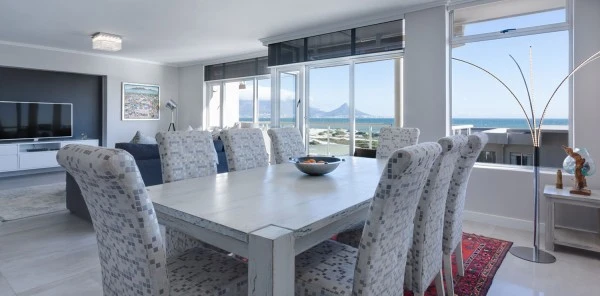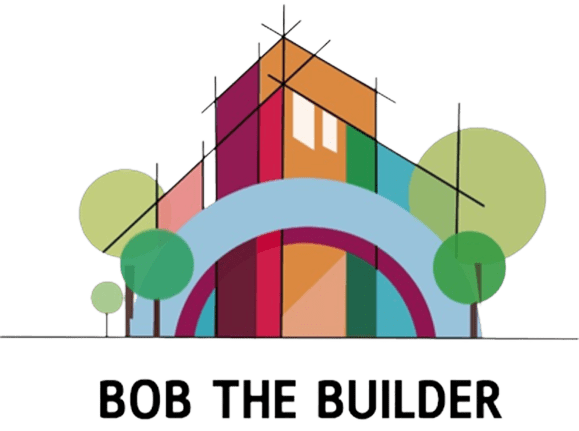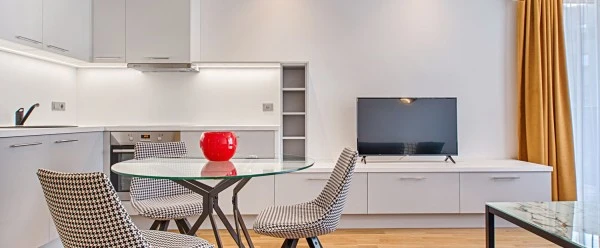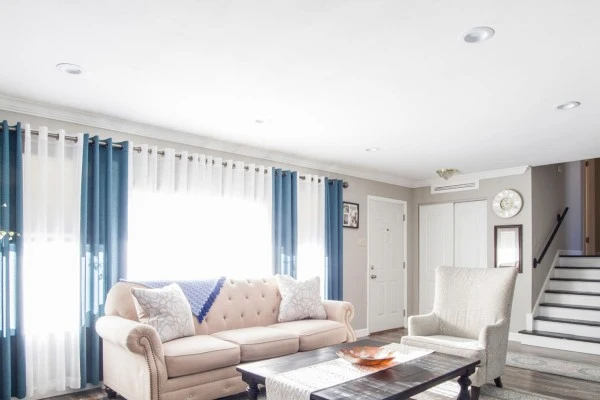
The Future of Sustainable Architecture: Green Building Trends in 2023
In a rapidly changing world, where urban landscapes continuously evolve, the concept of architecture is undergoing a paradigm shift. Gone are the days when buildings were mere brick-and-mortar structures serving functional purposes. Today, the essence of architecture is intertwined with sustainability, innovation, and a responsibility towards our environment.
Introduction to the Green Future
As the curtain rises on 2023, we stand on the verge of revolutionary green building trends that promise to transform our skylines, our living spaces, and most crucially, our ecological footprint. The push for sustainable architecture isn't new, but the urgency has heightened dramatically over the past decade. Climate change acts as a stark reminder. Rising global temperatures, erratic weather, and rising sea levels emphasize the importance of eco-friendly construction. The architectural world is responding with enthusiasm and innovation, leading to emerging sustainable trends combining aesthetics and functionality.
Why the Push for Green Architecture?
Primarily, buildings play a significant role in global energy consumption and carbon emissions. Hence, sustainable architecture is no longer a choice but a need. This understanding has introduced environmentally-conscious and human-centric innovations. The demand is not only from environmentalists but everyone. People now want designs reflecting sustainability. This demand inspires architects and builders to create not just structures, but legacies for the future.
Let's delve into the groundbreaking trends shaping sustainable architecture in 2023.
1. Energy Efficiency Takes the Lead
In today's world, the cry for energy conservation is more pressing than ever. With the increasing pressure on our planet's resources and the palpable effects of climate change, energy efficiency has swiftly moved from a supplementary feature in architectural designs to an absolute imperative. As we navigate through 2023, this element is not just a trend; it's the leader of the pack, setting the tone for modern architectural practices.
The emphasis on energy efficiency is, at its core, a response to a dual challenge. Firstly, there's the environmental challenge. Buildings consume a significant chunk of the world's total energy, primarily through heating, cooling, and lighting. Traditional building practices often led to structures that were power guzzlers, relying heavily on artificial sources of energy. This not only contributes to higher carbon emissions but also places a strain on finite natural resources.
Secondly, there's the economic challenge. As energy prices continue to surge, the long-term costs of maintaining a building become pivotal in architectural considerations. Energy-efficient designs promise not only to reduce the carbon footprint of a structure but also to offer considerable savings over a building's lifespan.
So, how is energy efficiency being prioritized in 2023's architectural trends? A significant focus is on Building with Thermal Mass. By using materials such as brick, stone, and concrete, modern buildings can regulate temperatures in a more natural manner. These materials absorb heat during the day and gradually release it during cooler periods, thereby reducing the dependence on HVAC systems and ensuring a more stable and comfortable indoor climate.
Parallelly, the integration of smart home technologies has transformed the way we perceive energy consumption. Smart Home Integration is no longer about convenience; it's about conservation. With the aid of Internet of Things (IoT) devices, modern homes and commercial spaces can actively monitor and adapt their energy usage in real-time. From automated blinds that adjust to the sun's position, to smart thermostats that learn user preferences, buildings today are becoming more responsive, adaptive, and, inherently, more energy-efficient.
In the broader spectrum, energy efficiency is more than just a trend; it's a movement. A movement driven by collective responsibility, technological innovations, and an unwavering commitment to our planet's future. As architectural designs continue to evolve, the role of energy efficiency as a cornerstone is undebatable. It's not just about building structures; it's about building a sustainable future.
2. Solar Innovation Beyond Panels
Solar energy, harnessed from the boundless power of the sun, has been at the forefront of renewable energy solutions for decades. Traditional solar panels, with their recognizable blue-black arrays, have become a common sight in many urban and suburban landscapes. However, as we journey through 2023, the solar industry's ingenuity is reaching new pinnacles. It's moving beyond the conventional panels, opening avenues for architectural designs that are as efficient as they are aesthetically appealing.
The primary motivation behind these innovations is two-fold. First, there's an ever-growing need to tap into the vast potential of solar energy more effectively. Sunlight, as a resource, is abundant, but our methods to harness and utilize it need constant evolution. Second, there's a demand from both architects and homeowners for solar solutions that seamlessly integrate with building aesthetics without compromising on design elements.
A standout innovation in this realm is Solar Windows. Imagine a world where the very windows you look out of, the skylights that flood interiors with daylight, are also power generators. Solar windows employ transparent solar panels, capturing sunlight and converting it into electricity. They strike a balance between form and functionality, offering clear views while contributing to a building's energy profile. Such innovations redefine our relationship with solar energy, making it an intrinsic part of our daily lives, beyond rooftops.
Another groundbreaking advancement is BIPV (Building-integrated photovoltaics). This concept blurs the lines between a building's structure and its energy-generating components. Photovoltaic materials are integrated directly into building parts – think walls, roofs, or facades. Instead of mounting solar arrays onto a structure, the structure itself becomes the solar array. BIPV not only broadens the scope for architectural creativity but also promises more consistent energy generation as more surface area is utilized.
Moreover, as the demand for green buildings rises, so does the need for multifunctional materials. Solar innovations are responding to this by introducing products like solar tiles and solar facades, which blend with the architectural aesthetics while maximizing energy yield.
In essence, solar innovations in 2023 are reimagining the way we perceive and employ solar energy in our built environments. It's no longer an add-on but a foundational element that architects and builders consider from the onset of design. As technology advances and the synergy between architecture and renewable energy strengthens, solar innovations promise a future where buildings are not just shelters but powerhouses, radiating sustainability in every sense of the word.
3. Natural and Recycled Building Materials
The architectural landscape of 2023 is one that echoes the clarion call of Mother Earth. Amidst the global urgency to mitigate the effects of climate change and reduce our ecological footprint, the construction industry is undergoing a profound transformation. Leading this green revolution is the shift towards utilizing natural and recycled building materials.
Historically, building construction has been resource-intensive. The sheer volume of raw materials consumed has not only strained our planet's resources but also contributed significantly to environmental degradation. The landfills overflowing with construction waste are a testament to the unsustainability of traditional building practices. However, as we stand at the crossroads of innovation and sustainability, the winds of change are palpable.
Firstly, there's a renewed appreciation for Natural Materials. Bamboo, for instance, is emerging as a super-material in sustainable architecture. This rapid-growing grass, which can mature in as little as three to five years, offers durability and strength comparable to timber. Its flexibility and lightweight nature make it a favorite for structures and flooring. Furthermore, its growth cycle, which naturally regenerates without the need for replanting, epitomizes sustainability.
Then there's the marvel of earth-based materials like adobe, cob, and rammed earth. These materials, deeply rooted in ancient construction techniques, are making a contemporary comeback. Not only do they have a minimal environmental impact, but their thermal properties also make them energy efficient, naturally regulating indoor temperatures and ensuring comfortable living spaces.
Parallel to the embrace of natural materials is the revolutionary use of Recycled Building Materials. The idea is simple yet transformative: Instead of extracting new resources, why not reuse and repurpose what we already have? This philosophy has led to the surge in using reclaimed wood, which lends a rustic charm to interiors while reducing the demand for deforestation. Similarly, recycled metals and plastics are finding their way into modern structures, offering durability without the environmental cost.
4. Green Roofs and Walls
In the heart of bustling urban environments, amidst the concrete jungles and towering skyscrapers, a verdant revolution is taking shape. Enter the realm of green roofs and walls — an architectural solution that not only addresses the environmental concerns of our times but also introduces a touch of nature into modern cityscapes. As 2023 unfolds, these green oases are rapidly transforming how we perceive urban architecture.
Green Roofs are no longer an avant-garde architectural feature reserved for a few eco-conscious structures. They've become emblematic of the broader sustainability movement in construction. By introducing vegetation layers on rooftops, green roofs offer a plethora of benefits. Firstly, they combat the urban heat island effect. Cities, with their expansive concrete and asphalt surfaces, tend to absorb and retain heat, leading to significantly higher temperatures than surrounding rural areas. Green roofs, with their lush vegetation, act as natural insulators, absorbing sunlight and providing a cooling effect.
But the benefits don't stop there. These roofs play a pivotal role in stormwater management. Instead of rainwater rushing off rooftops and overwhelming urban drainage systems, the plants and soil on green roofs absorb and filter this water, releasing it slowly and reducing the risk of flooding.
Complementing green roofs are Green Walls or Living Walls. These vertical gardens, draped across building facades, breathe life into urban exteriors. Apart from the obvious aesthetic appeal, green walls offer natural insulation, reduce ambient noise, and improve air quality by filtering pollutants.
One cannot overlook the psychological and well-being advantages either. Urban residents, often starved of green spaces, find solace in these pockets of nature. They act as reminders of the intricate bond between man and nature, even in overwhelmingly artificial urban settings.
5. Water Conservation Systems
In an era marked by increasing water scarcity and unpredictable weather patterns, the architectural realm's role in water conservation has never been more critical. As we traverse 2023, the spotlight is on integrating innovative water conservation systems into our buildings, ensuring that every drop counts.
At the core of these systems is the principle of 'Reduce, Reuse, and Recycle.' Modern buildings, whether residential or commercial, are being designed with an emphasis on minimizing water wastage. Low-flow fixtures in restrooms, efficient irrigation systems in gardens, and sensor-driven faucets are no longer luxuries but necessities.
One of the standout features in sustainable architecture is Rainwater Harvesting. By equipping buildings with roof and ground catchments, rainwater is directed into storage tanks. This collected water can then be used for various non-potable purposes like gardening, flushing, and even laundry, significantly reducing the demand on municipal water supplies.
Complementing rainwater harvesting is the concept of Greywater Recycling. Instead of letting water from showers, sinks, and washing machines go down the drain, greywater systems collect, treat, and repurpose this water. While it's not suitable for drinking, this recycled water is perfect for landscape irrigation, toilet flushing, and more.
Incorporating these systems not only alleviates the strain on freshwater resources but also results in substantial cost savings for occupants in the long run. As sustainable architecture continues to evolve, water conservation systems underline the industry's commitment to a holistic approach, ensuring that our buildings are in harmony with the environment, not just in form, but in function.
6. Biophilic Design
At the confluence of architecture and nature lies the enchanting realm of Biophilic Design. A term that may sound intricate, its essence is beautifully simple: incorporating elements of nature into built environments. As 2023's architectural canvas unfolds, biophilic design stands out as a harmonious blend of aesthetics, well-being, and sustainability.
Biophilic design isn't just about placing a plant in a room. It delves deeper, aiming to forge genuine connections between inhabitants and the natural world. This manifests in numerous ways. Natural Lighting plays a pivotal role, with spaces designed to maximize sunlight, creating environments that uplift mood and boost productivity. Then there's the incorporation of Organic Forms and Patterns, where structures mimic nature's intricacies, be it through undulating walls or spiral staircases.
The philosophy extends to materials too, with wood, stone, and other natural elements becoming focal points of interiors. Water features, whether cascading fountains or serene indoor ponds, add tranquility, and auditory calm to spaces.
Research has consistently shown the myriad benefits of biophilic design. From reduced stress to enhanced creativity, spaces that resonate with nature foster well-being. As architects and designers in 2023 continue to craft spaces, biophilic design is a testament to the timeless bond between humans and nature, ensuring that even within walls, we remain seamlessly connected to the earth.
7. Zero-energy Buildings
Zero-energy buildings are the epitome of architectural advancement meeting ecological responsibility. As we tread into 2023, these structures are no longer just a vision; they are a burgeoning reality. But what makes a building 'zero-energy'? In essence, such a building produces as much energy as it consumes, achieving a net-zero energy balance. This equilibrium is attained through a fusion of advanced energy efficiency measures and on-site renewable energy generation, typically via solar panels or wind turbines.
The beauty of zero-energy buildings lies not just in their sustainability, but also in their resilience. By being less reliant on external energy sources, they remain functional even during grid disruptions. Furthermore, they offer significant long-term cost savings by slashing energy bills. As we navigate the architectural trends of 2023, zero-energy buildings stand as beacons, illuminating the path towards a harmonious coexistence between human habitats and the environment.
Conclusion
As 2023 progresses, sustainable architecture continues to inspire and redefine our perceptions. These trends capture the industry's essence, emphasizing the continuous evolution towards a greener future for all.



